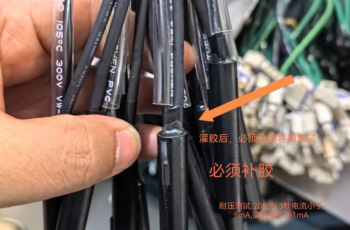Industrial sensor probe wire harness encapsulation: PUR 1670 is designed for harsh high and low temperature environments
In fields such as industrial automation, automotive electronics, and new energy, sensors serve as the “nerve endings” for data acquisition and system control, and their reliability directly determines the operational efficiency and safety of equipment. As the core carrier of signal transmission, the sensor probe harness is exposed to complex environments such as vibration, temperature difference, humidity, and chemical corrosion for a long time. How to achieve long-term sealing protection of the harness through encapsulation technology has become a key focus of industry technological research.1、 Industry pain point: The rigorous challenge of PVC wire harness encapsulationPolyvinyl chloride (PVC) is widely used as an insulation layer for industrial sensor wiring harnesses due to its low cost, good flexibility, and corrosion resistance. However, traditional potting materials often face the following challenges when bonding PVC substrates:Insufficient adhesion: Long term vibration or bending of the wire harness can easily cause delamination between the adhesive and PVC, leading to sealing failure;Poor temperature adaptability: Colloids become brittle and crack at extreme low temperatures, and soften and deform at high temperatures, making it difficult to meet the industrial requirements of -40 ℃~85 ℃;Weak impact resistance: The thermal expansion and contraction stress caused by equipment start stop or sudden environmental changes accelerates the cracking of the sealing layer.These issues not only affect the stability of sensor signal transmission, but may also cause equipment failures or even safety accidents. Therefore, a sealing adhesive that combines strong adhesion, wide temperature range stability, and impact resistance has become an urgent need in the industry. Why do we need high-quality potting materials?In industrial applications, sensor probe harnesses are typically exposed to various harsh environments, including high and low temperatures, humidity, vibration, and chemical corrosion. These external factors can easily cause the wiring harness to age, crack, or detach, thereby affecting the normal…


